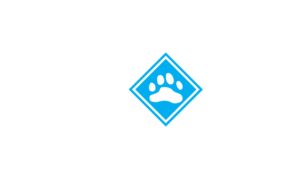This June, we had an exciting opportunity to travel to the Winter Wildlands Alliance Grassroots Advocacy Conference in Golden, Colorado. CTA Board member Ned Houston represented the CTA and the work accomplished through our program, the Vermont Backcountry Alliance. Ned was a panelist on Backcountry Ethics, which was an exciting opportunity to share the Vermont Backcountry Ethics, a recently developed set of guiding principles for winter backcountry enthusiasts based on the Leave No Trace model. While some topics were more relevant to western states, other topics paralleled challenges and opportunities in Vermont. Here’s a snapshot of some things we heard at the conference.

Backcountry Use on Federal Lands
The western snow-belt states have different challenges than here in the Northeast. Much of the backcountry advocacy and skiing seem to be on Federal Lands and hence dealing with the sometimes very laborious NEPA Process. In addition to avalanche problems, there are too many folks going in all directions on snowmobiles and the issue is ballooning. Land managers are working to scale back snowmobile traffic, which has increased drastically in the past decade. The increased traffic has resulted in conflicts between skiers and snowmobilers. These conflicts are happening at trailheads and also out in the mountains. The new snowmobiles can go just fine in deep powder, whereas old snowmobiles could not. This means they are literally traveling everywhere with much of the federal lands having no restrictions on them. Formerly quiet areas that were accessed only by human powered skiers and snowshoers are now being heavily utilized by snowmobiles raising questions about issues with noise, safety, excessive tracking, and avalanche danger.

Consequently, the Winter Wildlands Alliance (WWA) is working for a more equitable process via the Winter Travel Planning Process administered by the Forest Service. WWA and other advocacy groups are now working to get the US Forest Service moving on Over Snow Vehicles (OSV) plans and mapping, while making sure it happens in an equitable manner according to the law by setting aside non-motorized zones. Some National Forests areas, such as Vail Pass Winter Recreation Area, are completing the process, but most others are not taking action due to time constraints. It is a very complicated and exhausting process that typically takes years to go through.

Emerging User Groups
The conference provided a wide perspective on the topics including participation from snowmobile user groups.There is also a new category of user: the Hybrid Skier. A hybrid skier uses a snowmobile to access remote areas to ski and skin. Also snowbikes (motorized) and fat bikes (mountain bikes with extra wide tires) are creating new discussions about how to manage multi-use recreation areas.

Backcountry Ethics
We received positive feedback on the Vermont Backcountry Ethics and it is possible that it might become the framework for a larger undertaking. The audience felt that there is too much “noise” out there with all the different backcountry codes, responsibilities, and ethics such that the message tends to get lost. Maybe the VTBC’s effort will spur discussion to adopt one ethic for all skiers and riders. It was evident that our reference to staying clear of “maple sap lines” probably did not fit with the western territory, a good example of how priorities differ from region to region. It’s very exciting to take our local efforts in Vermont to the national stage, and to bring back the collective wisdom from our national partners.

We’d like to give a shout out to Ned for representing the CTA and VTBC program out in Colorado, and for sharing this blog post content with us. Thanks also to Kt Miller, a superb photographer for sharing her images from the conference. You can view more of her work at http://www.ktmiller.photo/.









